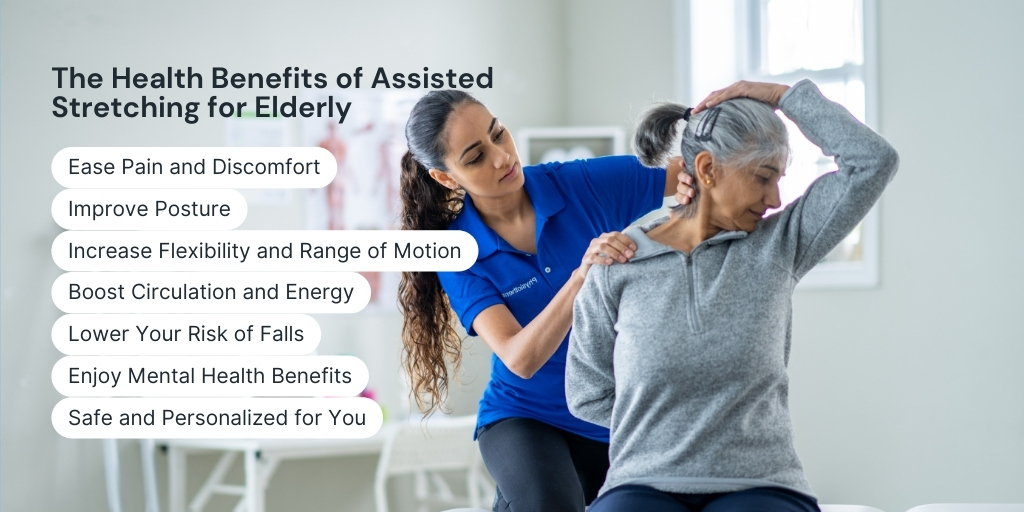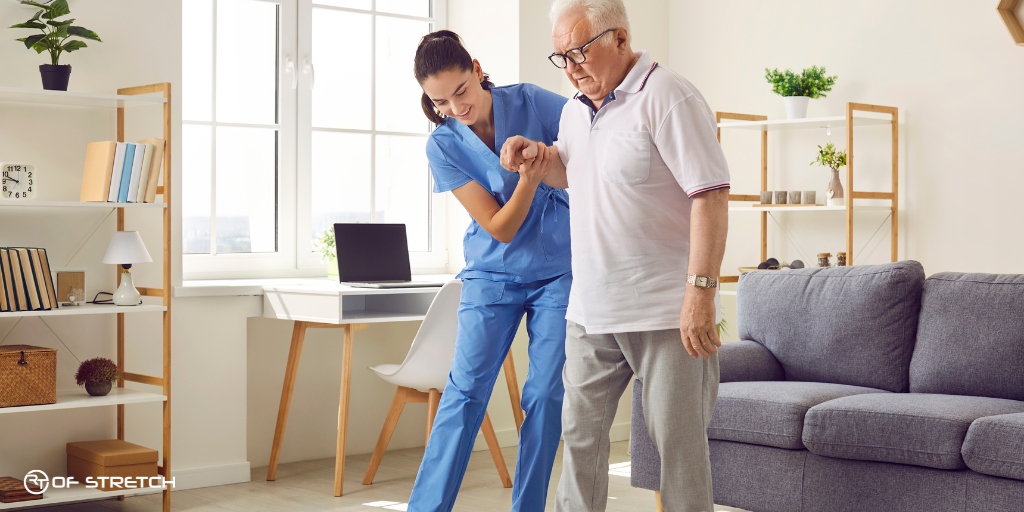The Health Benefits of Assisted Stretching for Elderly
Aging doesn’t have to mean losing mobility or living with constant pain. Assisted stretching, also known as assisted stretch therapy, allows seniors to stay flexible, active, and pain-free. It involves a trained professional helping you stretch, ensuring proper form and maximizing the benefits. Here’s why assisted stretches are a game-changer for elderly health.

1. Ease Pain and Discomfort
Assisted stretching helps reduce pain, especially for seniors with arthritis or muscle stiffness. Stretching keeps joints lubricated and prevents them from becoming stiff. It also relieves muscle tension, helping you feel more comfortable throughout the day.
2. Improve Posture
Poor posture is typical as we age, often leading to back pain and other issues. Assisted stretch therapy targets tight muscles that pull your body out of alignment. Stretching regularly improves spinal alignment and makes sitting or standing straight much easier.
3. Increase Flexibility and Range of Motion
Staying flexible is critical to moving easily and avoiding injuries. Assisted stretching maintains muscle elasticity and joint mobility, allowing your body to function more efficiently. With improved flexibility, everyday tasks like bending or reaching become simpler and less tiring.
4. Boost Circulation and Energy
Stretching improves blood flow, sending oxygen and nutrients to your muscles. This increased circulation helps you feel more energized and less tired. Assisted stretches also promote better overall health by improving blood flow throughout your body.
5. Lower Your Risk of Falls
Older adults often face fall-related risks, and assisted stretching helps reduce them. It improves balance and strengthens stabilizing muscles, reducing your risk of falls. With better coordination, you’ll feel more confident walking or navigating stairs.
6. Enjoy Mental Health Benefits
Stretching doesn’t just benefit your body; it also calms your mind. Assisted stretches reduce stress and promote relaxation by activating the part of your nervous system that encourages rest. This calm feeling can also help you sleep better at night, giving you more energy for the day ahead.
7. Safe and Personalized for You

One of the best things about assisted stretch therapy is that it is tailored to your needs. Professionals design a plan that works for your body and ensures safe movements. Their guidance helps you avoid injuries and get the most out of each session.
Feel Better, Move Freely, Live Happier
Assisted stretching can transform how you move and feel every day. Whether you want to reduce pain, improve your posture, or stay active, assisted stretches make it possible. Take the first step toward better health and improved mobility! Reach out to us today to learn more and schedule your first session. You’ll feel the difference!
FAQs
How does assisted stretching compare to regular stretching?
Assisted stretching goes beyond what you can achieve with regular, self-guided stretches. A professional helps guide your movements, ensuring proper form and deeper stretches. This method targets specific muscles more effectively, offering enhanced benefits like improved flexibility and reduced tension. To learn more about the benefits of assisted stretch therapy, check out this detailed guide.
How often should seniors do assisted stretching?
Seniors can benefit from assisted stretching 2–3 times a week. The ideal frequency is tailored to your specific needs, whether it’s boosting mobility or easing persistent discomfort. A trained professional can recommend a schedule that works best for you.
Are there any side effects of assisted stretching?
When done correctly, assisted stretching has minimal risks. You may feel mild soreness after the first few sessions as your body adapts. This is normal and typically subsides quickly. Always inform your stretch professional if you experience discomfort during a session.